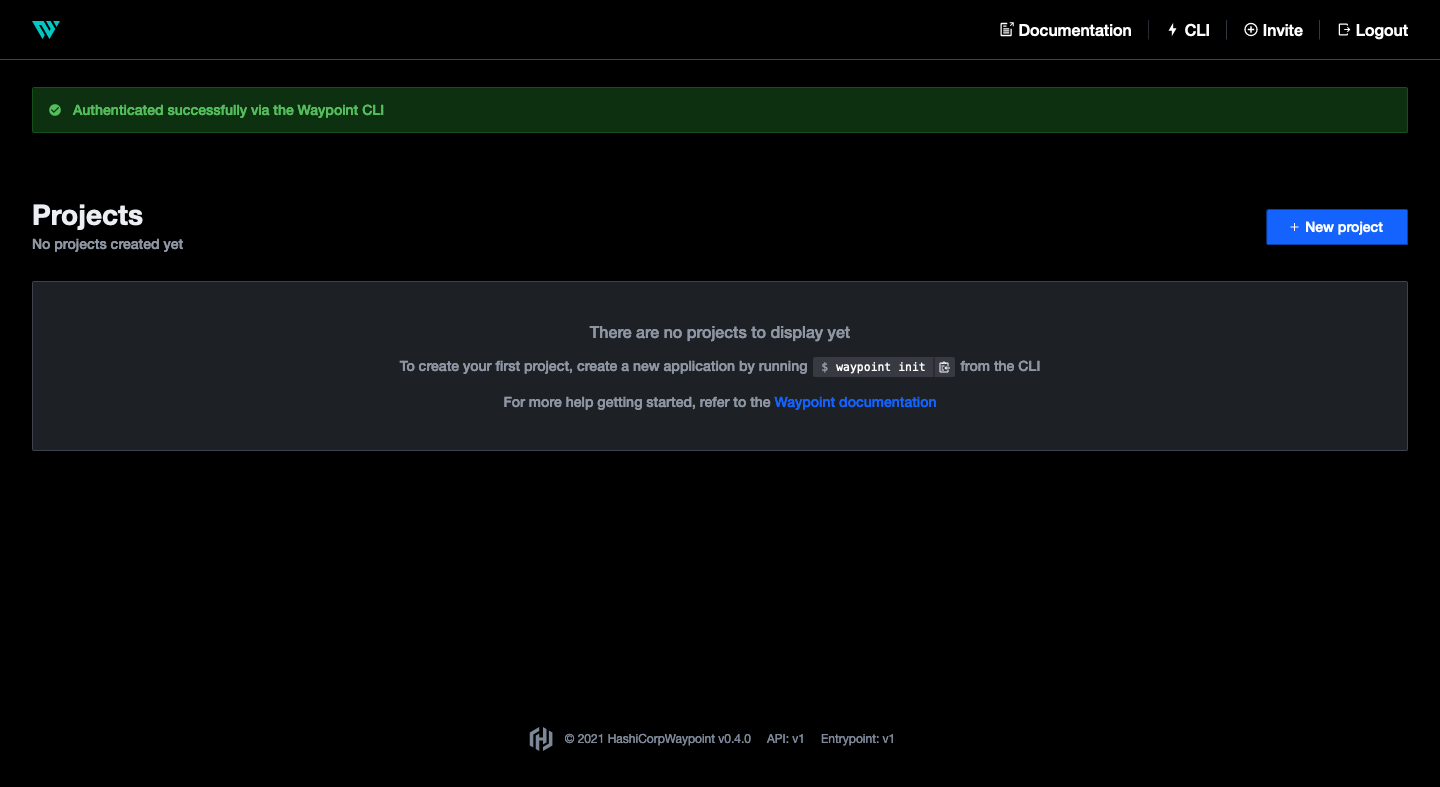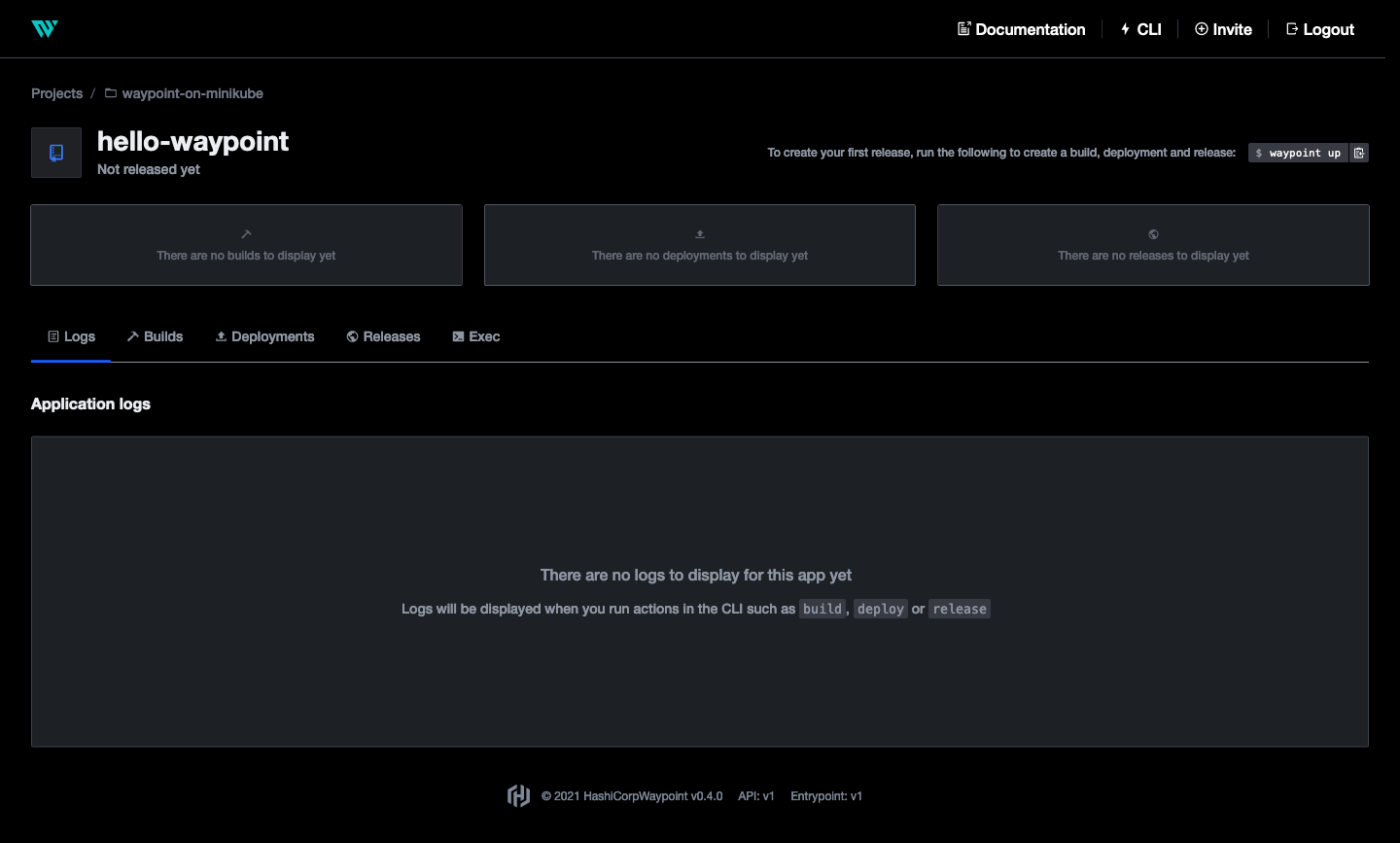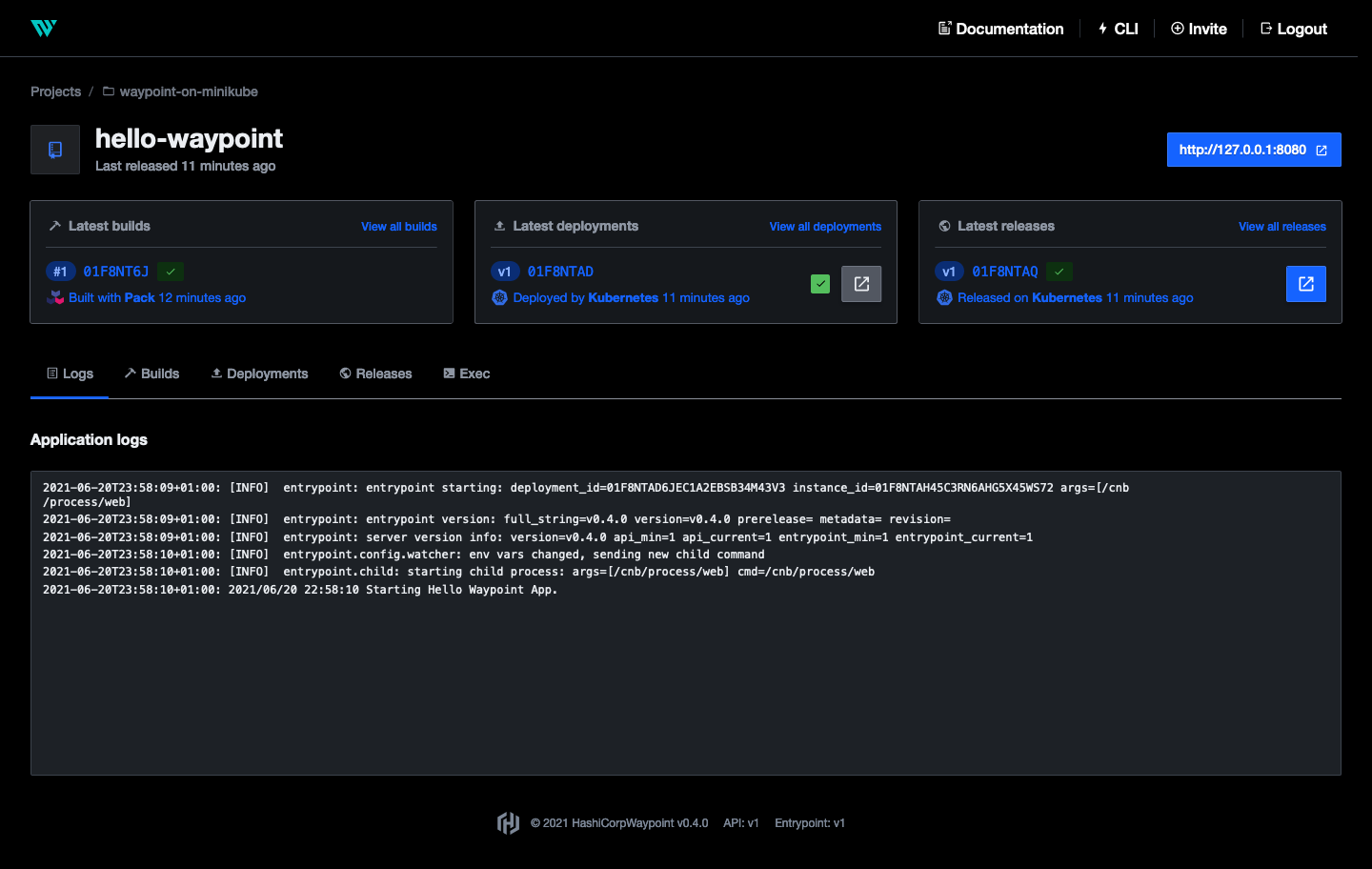Playing With Hashicorp Waypoint on Kubernetes With minikube
One of the latest additions to the HashiCorp line of products is Waypoint. Launched at the end of 2020 as an open source project, it is giving the first steps towards the goal of simplifying Developers' lives as well as Terraform did for Infrastructure folks.
A consistent developer workflow to build, deploy, and release applications across any platform. – Mitchell Hashimoto1
One of the things that immediately caught my attention was the fact of being a platform-agnostic solution. This means that whether you use Kubernetes, HashiCorp Nomad, Amazon ECS, Google Cloud Run, Azure Container Instances, Docker, and more, you can use Waypoint to Build, Deploy, and Release your applications. This is something I haven’t seen around, at least with mass adoption.
Since I’ve been involved in a team that works in an Internal Developer Platform, I couldn’t resist taking a look and give Waypoint a try in a local environment.
Installation⌗
Depending on your Operating System, instructions differ. Take a look at the official page.
For macOS users this does the trick:
Now you should be able to use Waypoint CLI.
Platform⌗
In terms of platform I chose Kubernetes - it’s the one I’m most familiar with. I will try others in the near future.
As a result, we need to launch a local Kubernetes cluster and run a command to expose services of type LoadBalancer (it will be needed for a Waypoint service).
Leave the shell with the last command running and perform the next steps in a new one.
Waypoint Server And Waypoint Runner⌗
Waypoint has the concepts of Server and Runner. The server is mandatory and it’s what allows collaboration between members. Runners' purpose is to execute remote operations such as builds, deploys, polling projects for changes, etc.
Both can be installed with one command:
Now you must be able to authenticate in the UI with:

Build, Deploy and Release⌗
Let’s build, deploy and release an application! We will use a basic Golang application for demo purposes and leverage CNCF project Builpacks to create a container image. You can find the source code in my GitHub repository.
hello.go file:
go.mod file:
And finally, the waypoint.hcl file:
The waypoint.hcl file could be simplified. I added more parameters than needed for exploration purposes. In this case, since it is a new application, I chose the kubernetes plugin, but an additional one, kubernetes-apply, is available if you already have Kubernetes resource files.
Moreover, note that I chose docker as a local registry for the container image. To have access to that image inside our minikube Kubernetes cluster, we will run a command that configures your environment to re-use minikube’s Docker daemon.
Let’s bootstrap:
The waypoint init command creates the Project waypoint-on-minikube and inside it the Application hello-waypoint.

And finally:
You should see a URL pointing to your application.
The waypoint up command performs three steps. You can also run them one by one with waypoint build, waypoint deploy, and waypoint release.
Interesting Features⌗
There are two interesting features that Waypoint brings to developers: logs and exec.
With waypoint logs, we can see real-time application logs in the command line with minimal retention. They can also be seen in the UI. According to Waypoint docs, these logs are not meant to replace other comprehensive logging solutions. This feature makes me think of kubectl logs.

Regarding waypoint exec, it allows you to execute commands in the context of your application. For example, if the platform is Kubernetes, it allows you to drop a shell inside a container. Again, similar to the kubectl exec command.
Let’s use it to print our hello.go file inside the container:
Cleanup⌗
Time to clean our environment. We will destroy our Application, uninstall Waypoint (Server and Runner), and destroy our Kubernetes cluster.
Final Remarks⌗
Waypoint is an interesting project that might fulfill the needs of some organizations. The fact it abstracts the platform in which developers are deploying giving a consistent workflow is well played by HashiCorp.
I would personally recommend it for startups giving their first steps towards an Internal Developer Platform. Nevertheless, don’t forget that it is a super early stage project!
I didn’t cover it in the essay, but there is also a GitOps feature launched in Waypoint 0.3. I wasn’t able to replicate with my current local environment (due to the use of a local container registry), but I will explore more and bring news soon. 😄
Lastly, if you are curious to see how Waypoint would work with a given technology, take a look at the waypoint-examples git repository.
I’m looking forward to seeing the evolution of Waypoint in the next releases as well as test it on more platforms.